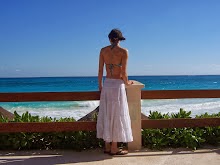When I ask clients if their last massage therapist worked on their gluteal muscles, I am always surprised to hear some of their answers.
"I asked, but they said they couldn't."
"I was too uncomfortable to ask."
" I don't have an issue in that area so I request not to."
Sadly, these days, a full body massage is not always a "full body." Certain body segments have become part of the "no touch zones" that are intentionally left out of massage and bodywork sessions.
This trend includes the pectorals, abdominals, and most notably the glutes. It's a problem that is increasingly exemplified in some franchise spas that are trying to protect themselves from the lawsuits of a sometimes litigious clientele, and in schools that aren't always prepared to teach their students the importance of gluteal work.
I try to inform the client to help them understand the importance of these muscles, what they do for the body, and why they on occasion need to be addressed and worked. With that said, the client is in control; if he/she is still uncomfortable then of course the gluteal region will not be part of the session. Usually it's not so much as being uncomfortable as it is uneducated on the purpose and function of the muscle group. This goes also for the massage therapist, sometimes schools aren't always prepared to teach the importance of gluteal work, the trend seems to be growing, experts are concerned about it's impact on the profession.
Three muscles make up the Gluteal group, these are:
Gluteus Maximus
Gluteus Medius
Gluteus Minimus
These are part of the structure that literally holds the legs to the pelvis, these are critical player in your posture, gait, and special movements. The glutes help stabilize the pelvice, spine and creates powerful movements at the hip joint. Not working these muscles is doing a disservice to the client. This muscle group effects the lower back, hip, legs, and knees. If the gluteal region is dis functioned then it causes misalignment and pain in other areas.
On your next appointment with your therapist ask about gluteal work and if it would be beneficial for you.
"Wisdom, is to the Mind, as Health is to the Body."
Bonnie Haldeman, LMT
Executive Spa and Massage







